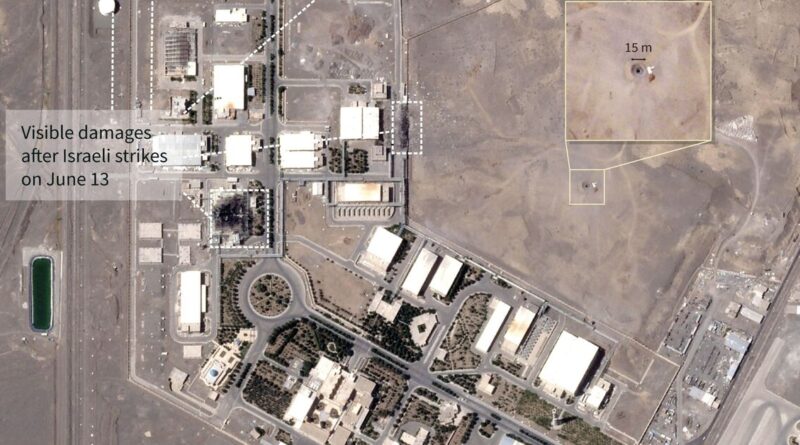Pentagon: B-2 strikes set back Iran's nuclear program 1-2 years
WASHINGTON — The Pentagon has assessed that the US Air Force’s long-range strikes targeting three major Iranian nuclear facilities have set back Tehran’s uranium enrichment program close to two years, the Defense Department’s top spokesperson said Wednesday.
“Iran is much further away today from a nuclear weapon than they were before,” Sean Parnell told reporters, before adding, “We finally have peace.”
“All of the intelligence that we’ve seen has led us to believe that Iran’s — those facilities especially — have been completely obliterated,” he said, in reference to the facilities at Natanz, Fordow and Isfahan.
Why it matters: The comment marked the first estimate shared publicly by a Trump administration official detailing how long it could take Iran’s government to reconstruct its nuclear enrichment program.
Pentagon officials have expressed confidence that the surprise US B-2 bomber and submarine-launched cruise missile strikes on Natanz, Fordow and Isfahan on June 22 thoroughly devastated those key facilities.
A preliminary Pentagon post-strike assessment leaked to reporters last week left open the possibility that the strikes may have set back Iran’s projected progress toward creating a nuclear weapon by only a few months.
News reporting on the Defense Intelligence Agency report, the conclusions of which were formally deemed “low-confidence” by the agency’s analysts, drew furious rebuke against the press from President Trump and senior members of his administration.
Defense Secretary Pete Hegseth last week reinforced Trump’s repeated assertions that the strikes had “obliterated” the Iranian nuclear facilities. Hegseth said he had seen no intelligence indicating that Iran’s stockpiles of highly enriched uranium had been moved from the facilities in which it was assessed they had been located before the American planes struck.
Iranian officials have not confirmed whether any personnel have yet been physically able to enter the underground Fordow facility, although satellite imagery shows construction and possible recovery activity at the site.
“No one exactly knows what has transpired in Fordow. That being said, what we know so far is that the facilities have been seriously and heavily damaged,” Iran’s foreign minister, Abbas Araghchi, told CBS News in an interview this week.
Israel’s government has also offered a rosy assessment of the US strikes.
“We are very happy and content with the results of the [US] operation,” Israel’s ambassador to the United Nations, Danny Danon, told a small gathering of reporters in Washington on Wednesday.
“Now, I think it’s still too early to give this a headline about for how long — whether it’s for years [or] for decades — but we pushed them back,” Danon said.
CIA Director John Ratcliffe told congressional lawmakers in a classified briefing last week that Iran will likely require “years” to overcome the destruction inflicted on its nuclear facilities, in particular its sole known uranium metal conversion facility at Natanz, the Associated Press first reported.
Trump administration officials have not clarified the origin of the intelligence that has led them to the latest conclusions. Parnell on Wednesday told reporters that US allies in the region “share our sentiments about the degradation of Iran’s nuclear program by one to two years.”
“At least intel assessments inside the department assess that, and I think their intelligence shares that conclusion,” Parnell said. “I think we’re thinking probably closer to two years,” he added, stating US allies “universally” assessed that the “American action in Iran has set the conditions for global stability.”
Know more: Analysts have said it’s not likely that all of Iran’s 60% enriched uranium and centrifuges were destroyed in the strikes. Despite the heavy setback, “Iran retains an ability to breakout and produce weapon-grade uranium,” David Albright, the director of the independent Institute for Science and International Security, told Al-Monitor last week.
Rafael Grossi, the head of the UN’s International Atomic Energy Agency, also cast doubt on the latest US assessments over the weekend, without addressing them directly.
“The capacities they have are there. They can have — you know, in a matter of months, I would say — a few cascades of centrifuges spinning and producing enriched uranium, or less than that,” Grossi told CBS News on Sunday.
Parnell on Wednesday declined to comment on the assessment cited by Grossi.




